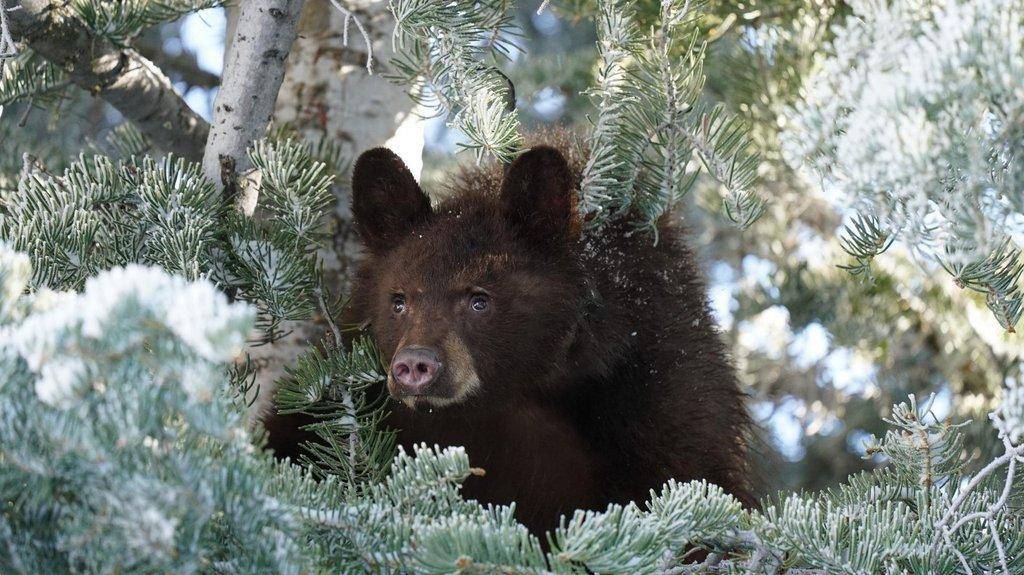DWR News Release
The Utah Division of Wildlife Resources is recommending a few minor updates to the 2021 Black Bear Management Plan in order to comply with legislative changes passed this year, and wildlife managers are asking for the public’s feedback.
The current Black Bear Management Plan was approved by the Utah Wildlife Board in 2019 and will be in its third year of the three-year recommendation cycle in 2021. As such, the DWR is not recommending any changes to black bear hunting season dates or permit numbers this year.
The changes being recommended are to update the management plan so it complies with the recent legislative changes passed earlier this year. A law passed during the 2020 legislative session authorizes the DWR director to take immediate action (under certain conditions) when a big game population is under the established herd-size objective for a management unit. Because black bears sometimes prey on deer fawns, predator management plans will be implemented to decrease bear population densities in some areas of the state. Reducing those population densities should also decrease the predation rates on mule deer populations that have seen significant declines in recent years.
New data from GPS collars helps DWR biologists determine the cause of death for many species. When biologists determine that predators, including black bears, are preventing the growth of big game populations, the big game populations are under their management objectives, and several other conditions are met, the predator management plans are implemented for that area.
Here is a look at the recommended changes:
2021 bear hunting recommendations
The DWR is proposing to update the Black Bear Management Plan to ensure that it is aligned with new legislative requirements when predators are determined to be preventing a mule deer herd from reaching the management objective. If a bear management unit is placed under a predator management plan, that unit will not be included in statewide calculations required in the Black Bear Management Plan. This means that if a hunting unit is placed under a predator management plan, that unit will be managed under the “liberal harvest strategy” to help decrease bear populations in that area for the duration of the predator management plan. However, that unit will not be considered as one of the 25% of units in the liberal harvest strategy allowed by the Black Bear Management Plan.
The plan also requires that all harvest data for the state (adult male five years and older and females in the harvest), when considered together, may not be outside the performance target ranges identified in the moderate harvest strategy. This change would not consider predator management plan units in the statewide assessment of harvest data.
“We feel that these changes to the plan will help us align with the legislative requirements to help prevent predators from decreasing big game population numbers, while also maintaining healthy bear populations,” DWR Game Mammals Coordinator Darren DeBloois said.
In 2020, 1,190 black bear hunting permits were issued and 443 bears were harvested, an increase from 369 bears harvested in 2019. Depredation incidents involving bears killing livestock or damaging agriculture were up slightly this year, but the overall costs of damage have decreased for the third year in a row.
In order to follow health officials’ recommendations to decrease the spread of COVID-19, the public meetings for these proposals will be held online. You can view the biologists’ presentations and share your feedback about them here on the DWR website. The presentations can also be viewed on the DWR YouTube Channel, but comments can only be submitted through the forms on the DWR website.
The public comment period for each of the five Regional Advisory Council meetings and for the Utah Wildlife Board meeting opened on Nov. 20. The public comments previously submitted will be shared with the RAC and wildlife board members at each respective meeting. While members of the public can watch a livestream of each of the RAC meetings and the Utah Wildlife Board meeting, public comments will not be accepted during these electronic meetings.
The electronic meetings will be held on the following dates and times:
- Central Utah RAC meeting: Dec. 1 at 6 p.m. (Public comments must be submitted by Nov. 28 at 11:59 p.m.)
- Northern Utah RAC meeting: Dec. 2 at 6 p.m (Public comments must be submitted by Nov. 29 at 11:59 p.m.)
- Southern Utah RAC meeting: Dec. 8 at 6 p.m. (Public comments must be submitted by Dec. 5 at 11:59 p.m.)
- Southeastern Utah RAC meeting: Dec. 9 at 6:30 p.m. (Public comments must be submitted by Dec. 6 at 11:59 p.m.)
- Northeastern Utah RAC meeting: Dec. 10 at 6:30 p.m. (Public comments must be submitted by Dec. 7 at 11:59 p.m.)
- Utah Wildlife Board meeting: Jan. 5 at 9 a.m. (Public comments must be submitted by Dec. 17 at 11:59 p.m.)

